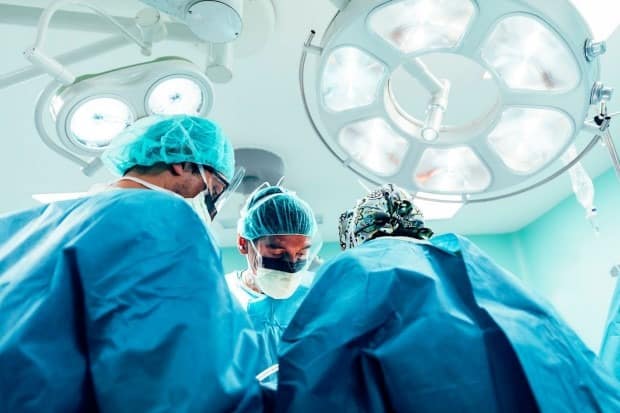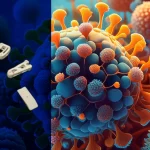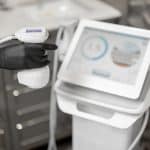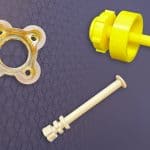What Is Orbital Reconstruction?
Orbital trauma (trauma to the facial bone structure) can happen due to injuries, benign and malignant tumors, or infectious diseases. In the case of tumors where bone extraction may be necessary, replacing the bone in the orbital region does not usually cause deformity. However, in cases where significant bony material is lost or extracted, surgeons have typically used bone grafting to restore facial form and normality.
Yet, bone grafting presents its own issues with misalignment. Medical research has turned to materials such as titanium and precision plastics like PEEK. In this insightful brief, we discuss the advantages of PEEK for maxillofacial surgical procedures.
Challenges of Maxillofacial Surgery
There are issues with bone grafting though, namely imperfect alignment and resorption. The slight variability in the three-dimensional (3D) contour of the orbit with flat or slightly curved bone grafts can have a significant aesthetic effect on the outcome.
For a patient who has suffered trauma, coming out of surgery without the aesthetics of their face is emotionally devastating. For surgeons committed to providing the highest level of medical treatment, bone grafting is not always the best option.
In these cases of orbital reconstruction, it’s common for surgeons to use alloplasty, or inert pieces of metal and plastic for reconstruction. Traditional materials for alloplastic have been titanium plates or mesh. However, challenges associated with these materials include proper fixation and revision surgery complications due to soft tissue ingrowth.
Why PEEK Is Changing the Face of This Industry

With advancements in 3D printing and subtractive manufacturing techniques in precision polymers, patient-specific implants (PSIs) have been successfully reported in facial reconstruction. More recently, polyetheretherketone (PEEK) is a polymer with ideal alloplastic properties: nonconductive, biocompatible, and stable in the setting of long-term exposure to bodily fluids, elasticity is similar to native cortical bone, and light material makes it suitable for even large defects. As medical technologies continue to advance, PEEK has become a popular pick for PSIs.
A Case Study in PEEK Implants
One of the setbacks of titanium and metallic implants is that the manufacturing process takes time. In the case of PEEK implants, subtractive manufacturing offers convenient and quick milling precision at 0.4 mm thickness. The design freedom with PEEK is also much easier to produce than with metallic implants.
In addition, PEEK offers excellent imaging properties without artifact blockage, and it is most comparable to cortical bone. Recent research has shown that PEEK is an optimal choice for patients and surgeons with regard to revision surgery as well.
In a PEEK PSI group, diplopia after surgery was absent in 82.1% of patients versus 70.6% of controls with pre-bent titanium. These results showed that PEEK PSI demonstrated higher clinical efficacy in comparison to pre-bent plates in orbital wall reconstruction, especially in restoring the volume and shape of the damaged orbit.
Comparison to Metallic Surgical Materials
The most commonly used surgical material for orbital reconstruction is titanium. Its strength and flexibility set it apart as a material that lends itself well to meld to complex facial structures. However, Polyetheretherketone (PEEK) presents a major benefit as a material pick for its thermostability and comparability to cortical bone. We’ve mapped out a comparison of these common surgical materials below.
Additive Manufacturing Titanium
3-D manufactured titanium produces surfaces without tools or devices. It also enables options for surface design and intricacies that were previously impossible. In addition, additive manufactured titanium implants are so precise they don’t require reshaping processes.
Advantages
• Wide selection of shapes, structures, and styles
• Precise fitting accuracy
• Exceptionally stability
• Osteoconductive structures are possible
• Complete design freedom for the material and its surface
• Quick operation
• Steam sterilization
Limitations
• Additional material work is required for revision surgeries
• Intraoperative cutting to length is exceptionally difficult
Titanium Mesh
The special microstructure of titanium mesh allows it to be used in three-dimensional deep draw applications. A thermal process helps maintain the closed structure, which means that this material is both stable and intact while still offering excellent biocompatibility with bone apposition potential.
Advantages
• Very good biocompatibility, potential for vascularization
• Good mechanical properties
• Ease of manufacturing and cutting to size
• Bone cell apposition potential
• Relatively low price level
• No other plates required for fixation
• Steam sterilization (autoclavable)
Limitations
• No three-dimensional bone substitute
• Need for tools
Solid Titanium
Solid titanium is a high-strength reconstruction alternative to titanium mesh. Even though it has been widely supplanted by titanium mesh in recent years, it offers several advantages in specific fields of use, such as in relation to the mechanical protective function.
Advantages
• Best mechanical protective function
• High-strength reconstruction alternative
• No plates required for fixation
• Steam sterilization
Limitations
• Increased thermal conductivity
• Post-operative bending is not possible
• Post-operative cutting to size is not possible
PEEK
PEEK is a high-performing thermostable plastic. Its physical properties are similar to the cortical bone’s in humans, making PEEK the most frequently used in orthopedics. PEEK implants can be manufactured to be completely solid or contain holes.
Advantages
• Highly elastic, yet very strong and impact resistant at the same time
• Optimal protective function for patients
• No increase in thermal sensitivity
• Low weight
• Resistant to gamma radiation and magnetic resonance imaging (MRI)
• Low artifact formation in X-rays
• Three-dimensional bone replacement
• Steam sterilization
Limitations
• Only conditional cell apposition potential
• Intraoperative adjustment or cutting to size is only possible with additional effort
• Requires further plates for fixation
Unrivaled Expertise in Medical-grade PEEK Devices
Machining complex medical parts and devices takes more than precision. It takes unrivaled expertise. The medical industry is fast-paced and cutting-edge with technology challenges. Precision plastics like PEEK implants play a key role in meeting the demands of the industry.
PEEK and other precision plastics are highly sought after for their radiolucency, biocompatibility, and sanitation. Time is of the essence in healthcare, especially with traumas like orbital reconstruction. These types of surgery demand a quick turnaround on design and manufacturing to lessen surgical downtime.
At AIP, we make it our priority to set the highest standards of quality and sanitation for our customers in the healthcare industry. Quality assurance is an integral part of our process and we address it at every step of your project from beginning to end.







